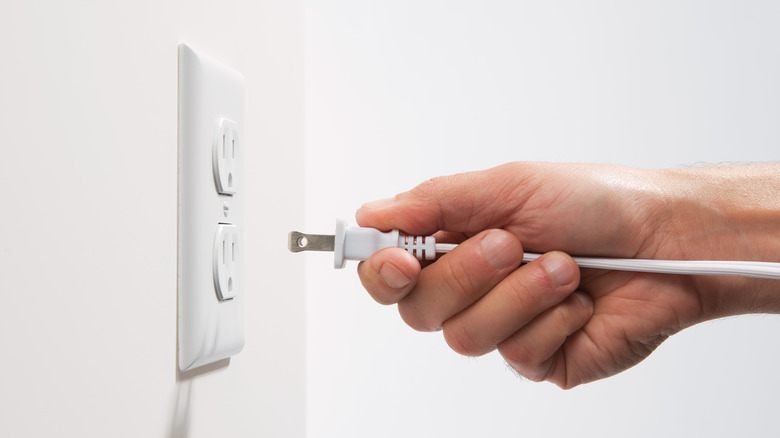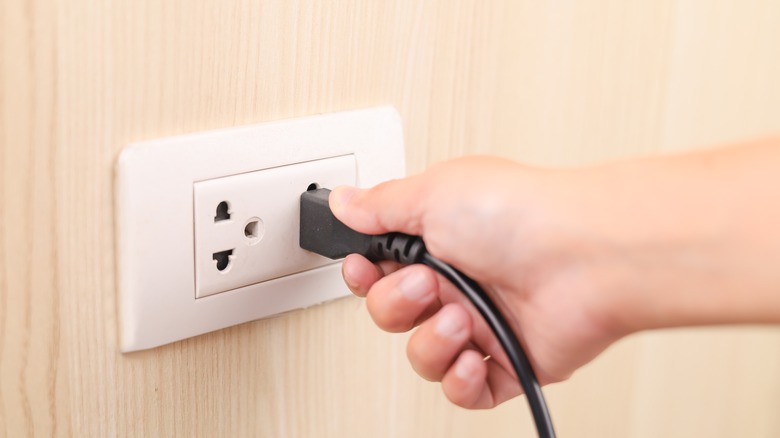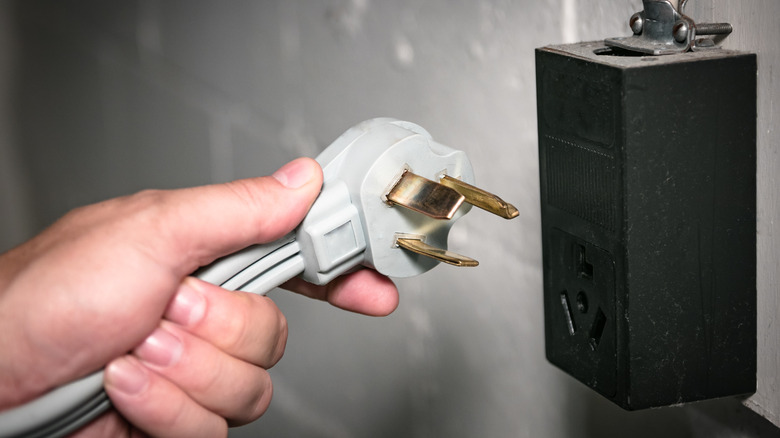The Difference Between A 120-Volt & 240-Volt Power Outlet Explained
Electricity is complicated. Thankfully, the average person doesn't have to have the knowledge of a professional technician to keep things running. In most cases, all you have to do to ensure your appliances get power, your devices are charged, and your lights are on is to pay your bill on time, but it can be beneficial to arm yourself with additional knowledge of what's going on behind the scenes. Whether you're just curious, you're facing problems with the electricity in your home, or you're attempting to plan the layout of your new space, learning to differentiate between 120-volt and 240-volt outlets is one of the first steps you can take to better your understanding.
Let's start with the basics. The easiest way to understand electricity is to think of it like water. It flows in through power lines outside of your home, then is delivered through wires to accessible points along your walls. These are your outlets, where you're able to plug in cords and access the electricity necessary to power individual items. Most of these outlets give you access to the standard 120 volts of electricity, which is plenty to power everyday devices. For certain applications, however, you need more power. That's where 240-volt outlets come in. Understanding this difference is key — too much voltage flowing through the wrong type of wire can cause electrical fires, while not enough power can leave you with devices that work inefficiently.
When to use 120-volt outlets
In a normal home, almost all of the outlets you interact with on a daily basis will be 120-volt outlets. They're easy to identify — just look for the basic three-prong shape along your walls to find them. These outlets can be used to charge your phone, power lamps, and plug in your vacuum, but they also carry enough charge to ensure many of your appliances are running properly. The exact power needs for appliances will vary occasionally based on the model, but most refrigerators, dishwashers, and microwaves will do just fine on a 120-volt outlet.
Because they're so standard, 120-volt outlets are also less expensive to install. The cost of materials is only around $3 to $5, with slight exceptions if you want a specialty outlet that you can plug a USB directly into. This cost does rise, however, when you include the price of labor, but you should still only expect to spend around $175 per outlet in your house if you plan to have them professionally installed. This will add up if you're installing multiple in each room, but if you consider the entire cost to build a house from scratch, this is a minor expense in the grand scheme of things.
When to use 240-volt outlets
In certain situations, you need a little extra power. That's where 240-volt outlets come in. These outlets are easily identified thanks to the fact that they're significantly larger than 120-volt outlets. They will have a rounded top and either three or four prongs that sit at an angle. If you've never seen one of these outlets around your home, don't fret — they're typically only used to power larger appliances and will usually be in a more concealed area as a result. Typical applications for 240-volt outlets include dryers, ovens, water heaters, and central air conditioning units, though they're also sometimes used to charge electric vehicles.
If you need additional 240-volt outlets in your space, you can expect to spend more money than if you were to add more 120-volt outlets. The cost for materials is only about $20 to $30, but because these outlets require special wiring and are more dangerous to work with, installation could run you around $300. Because of this, it's important to take your power needs into consideration when designing a new home or renovating your existing space. As a general rule of thumb, don't attempt these electrical projects at home unless you're a professional. High voltage can be incredibly dangerous, and even a minor slip-up can lead to major issues down the line.


